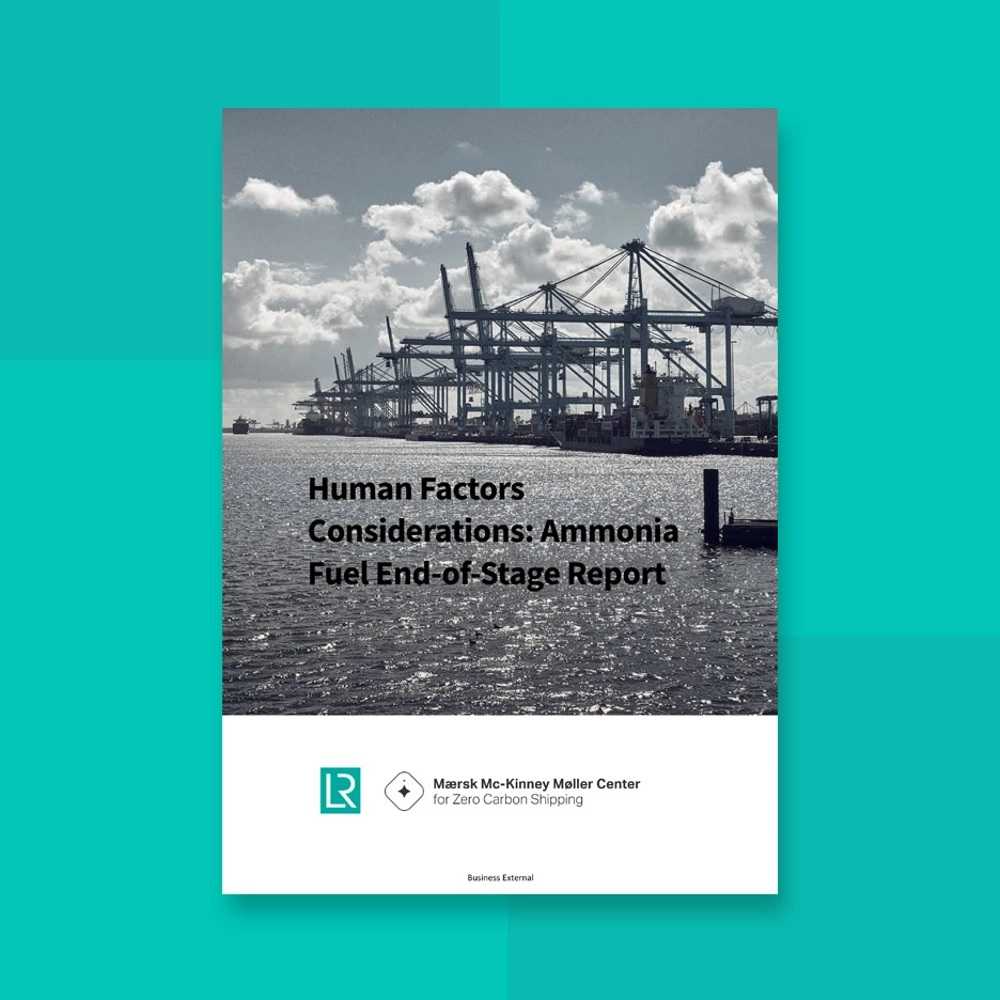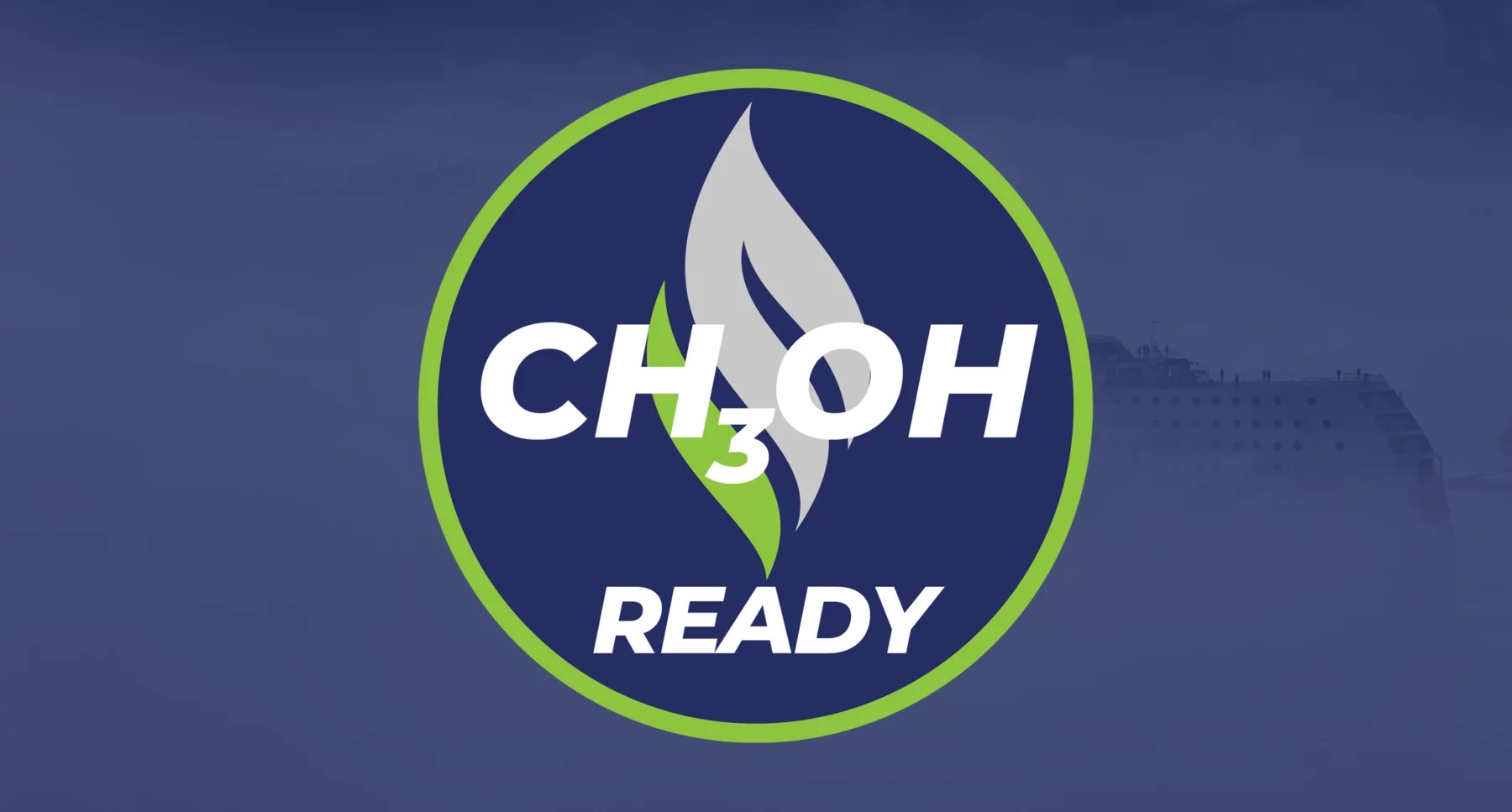Application of human factors principles essential to help lower risks of ammonia as a shipping fuel

A joint study by the LR Maritime Decarbonisation Hub and the Mærsk Mc-Kinney Møller Center for Zero Carbon Shipping, Human Factors Considerations: Ammonia Fuel End-of-Stage Report, has found that while the shipping industry is able to build upon existing experience with using low-flashpoint fuels and transporting ammonia as cargo, it is critical that the various safety risks, including those associated with human factors, are understood so that appropriate operational and design safeguards can be put in place.
Ammonia has been widely identified as an alternative fuel for shipping as the global energy transition drives the industry to move from fossil fuels to new energy sources. However, as with conventional fuels, ammonia presents safety challenges that seafarers need to understand and address before ammonia can become a viable marine fuel.
The new study assesses eight human factors impacts for the usage of ammonia as a shipping fuel on three reference designs of tanker, container and bulk carrier vessels.
Competency and training of seafarers, processes and procedures, occupational health hazards and process safety hazards, are highlighted as the highest priorities. Ergonomics and management of change are rated as a medium priority, but essential to the successful implementation of the high priority considerations. New seafarer roles and responsibilities, resourcing and personnel are currently low priority, but will be require changes as ammonia emerges as a viable fuel.
Understanding of toxicity
Competence and training introduce new technical skills for seafarers directly involved in managing the transfer, handling and storage of ammonia. This would entail seafarers’ understanding of ammonia’s toxicity potential and materials incompatibilities, as well as its unique behaviours, dispersion and ignition characteristics. This is to ensure seafarers are prepared to carry out emergency response actions to mitigate the potential impact of catastrophic events, such as toxic vapour clouds, explosions or spills, to persons onboard or in adjacent areas, including other ships, ports or communities.
Updated chemical management knowledge of ammonia and other chemicals needed to support ammonia operations would also be required for safe storage, tank preparation, transfer and use in engines.
Ammonia operations and maintenance activities will require numerous changes and modifications to work procedures and processes to ensure ammonia hazards are well controlled and to accommodate any special requirements from port / flag states and ports. These include voyage, communications and emergency response plans for arrival and departure at ports, record-keeping and reporting. This is especially important for activities where risk potentials for leaks or spills are higher, such as ship-to-ship mooring and bunkering, as well as coordination with organisations providing services to the vessel, including port authorities, marine pilots, contractors, vendors or suppliers.
Designing equipment and systems with people in mind will be essential to reduce the potential for human errors and enhance human performance, especially during intense operations or emergency situations. Application of user-centred ergonomics design will benefit the operability and maintenance of new ammonia-related systems, equipment and spaces, such as taking into account any physical constraints of seafarers when conducting tasks that require personal protective equipment (PPE).
Occupational health hazards
There is a range of occupational health hazards to crew working in hazardous areas of ammonia-fuelled vessels, due to the nature, exposure levels and duration of the chemical when in contact with a person. This necessitates the design of task-specific PPE aimed at reducing the potential for exposure and minimising the quantity of residual ammonia. Companies will need to prescribe the levels of PPE needed for various tasks and the means for the rescue and first aid treatment of personnel exposed to ammonia. New ammonia-handling PPE equipment will also require appropriate stowage that has manual and chemical handling considerations.
In addition, process safety hazards associated with ammonia differ from those of fuel oil, requiring new or amended safeguards and safety management practices. This includes control of pressure and temperature to reduce the potential for consequences from leaks or spills, as well as operating practices to enable early recognition of and prompt reaction to off-normal conditions to prevent situations from escalating.
Seafarers are essential workers in the shipping industry, and their health and safety are crucial to prevent accidents, handle emergencies and protect the marine environment. The human factors considerations proposed in this report are aimed at guiding the industry to develop human-oriented engineering barriers and administrative safeguards onboard vessels to lower various ammonia risks that will eventually enable the shipping industry to move forward with its decarbonisation goals.
Download Human Factors Considerations: Ammonia Fuel End-of-Stage Report
Note: Article by Lloyd's Register (https://www.lr.org)

